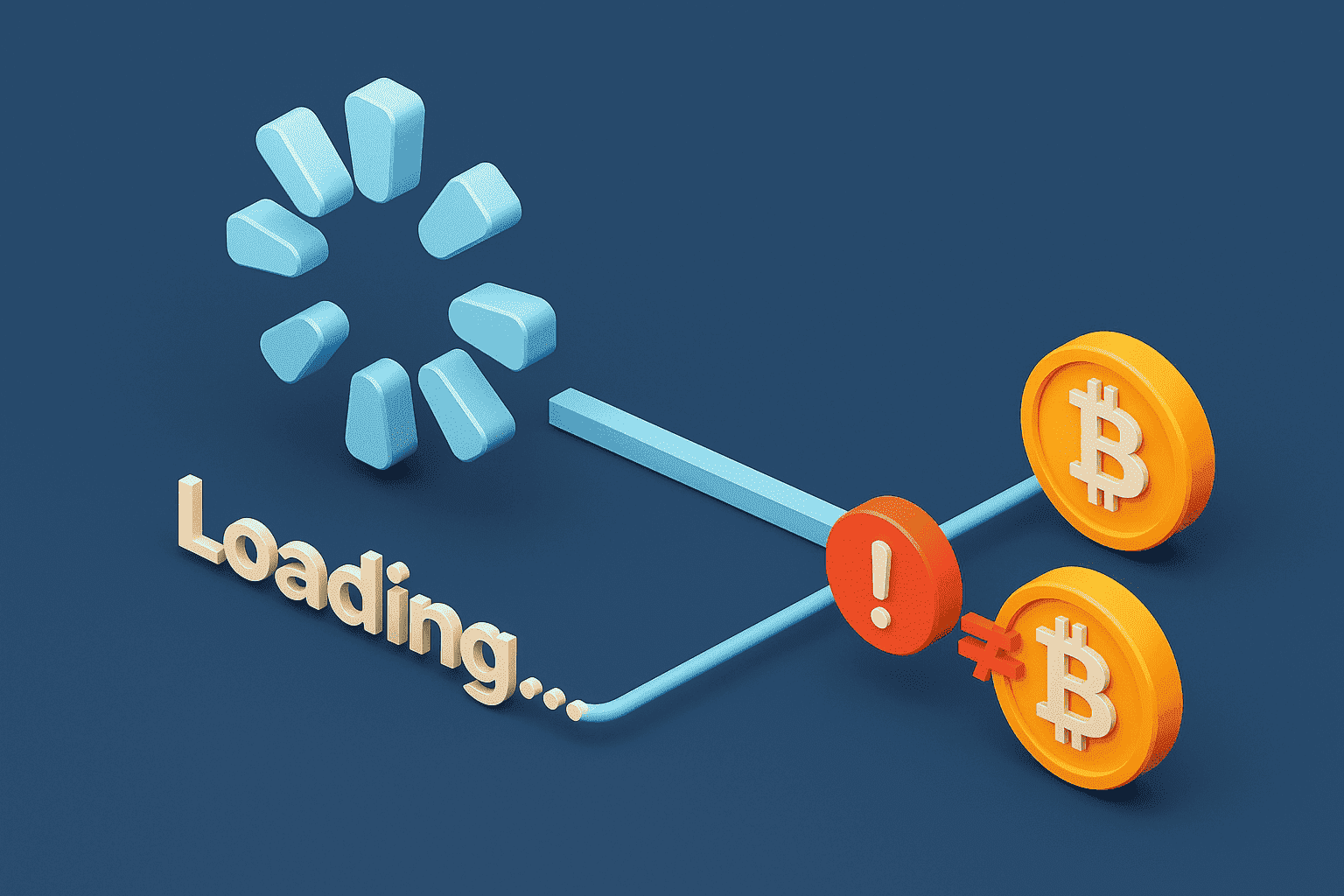In blockchain networks, the time it takes for transactions and blocks to propagate between nodes directly affects reliability, security, and overall performance. This technical guide explores the sources of network latency, methods for measuring it, its impact on double-spend risks, and advanced strategies for optimizing P2P protocols and network stacks to prevent attacks and ensure node stability.
1. Defining Network Latency
Network latency is the time it takes for a data packet to travel from one node to another in a P2P blockchain network. Beyond raw transmission delays, overlay protocols (gossip propagation, validation, block assembly, and block relay) introduce additional layers of latency.
2. Detailed Latency Types
2.1 Transport Layer Latency
Includes propagation delay (physical signal travel), transmission delay (time to send complete packet), and queuing delay (time waiting in router queues). Typically measured with ping and traceroute:
ping node.example.com traceroute node.example.com
2.2 Application Layer Latency
Processing delays from transaction validation, encryption/decryption, and internal queues in P2P libraries (libp2p, GossipSub). Each peer adds processing delay before forwarding messages.
2.3 Consensus Latency
In PoW chains, block interval and propagation time dominate. In PoS and BFT systems, validator communication and block finalization rounds introduce consensus delay.
3. P2P Protocols and Mesh Networks
Key components of P2P topologies and overlay protocols include:
- GossipSub: a pub/sub system optimized for block and transaction dissemination; tuning
DandD_lowparameters controls fanout and redundancy. - libp2p: a modular networking stack supporting TCP, QUIC transports, TLS/Noise encryption, and stream multiplexers (Mplex, Yamux).
- GraphSync: a data synchronization protocol used in IPFS and Eth2 clients for efficient block and state syncing.
4. Measuring Latency: Tools & Code
4.1 RTT Measurement with Python
import subprocess nodes = ['node1.example.com', 'node2.example.com'] for n in nodes: result = subprocess.run(['ping', '-c', '4', n], stdout=subprocess.PIPE) print(result.stdout.decode())
4.2 Packet Analysis with Wireshark
Capture on TCP/UDP ports for your P2P client, filter by node IPs, and analyze SYN/ACK and data push intervals to identify delays.
5. Impact on Security and Double Spend
High latency windows allow attackers to broadcast transaction A to one set of nodes and transaction B to another before the network converges, enabling a double spend. Minimizing propagation delay and rapidly detecting forks is essential.
6. Double Spend Attacks: Mechanisms & Analyses
Common double-spend variants include:
- Race Attack: simultaneously broadcasting two conflicting transactions.
- Finney Attack: premining a block containing a conflicting transaction before making a purchase.
- Vector76 Attack: combining race and withhold tactics to trick SPV clients.
7. Monitoring & Prevention Strategies
- Require ≥6 confirmations for BTC and ≥20 for smaller chains to reduce fork risk.
- Maintain ≥12 peer connections per node to reduce average RTT.
- Use private transaction relays (Flashbots, EIP-1559 bundles) to avoid public mempool exposure.
- Monitor orphan blocks and forks via APIs (Blockchair, Mempool.space).
- Implement periodic network probes to measure real-time propagation times.
8. Table 1. Network Latency Metrics
| Metric | Description | Recommended Value |
|---|---|---|
| RTT | Round-trip time between peers | ≤100 ms |
| Block Propagation | Time for block to reach 50% of nodes | ≤2 s |
| Queueing Delay | Time spent in processing queue | ≤20 ms |
| Processing Delay | Time to validate packet | ≤5 ms |
| Mempool Growth | Change in pending tx count per minute | ±2% |
9. Table 2. Double Spend Prevention Checklist
| Step | Action |
|---|---|
| 1 | Measure RTT with ping/traceroute |
| 2 | Maintain ≥12 geographically diverse peers |
| 3 | Set appropriate confirmation thresholds |
| 4 | Utilize private relays (Flashbots) |
| 5 | Monitor orphan blocks and forks |
| 6 | Run regular mempool probes |
| 7 | Keep P2P client updated (libp2p optimizations) |
| 8 | Split large transactions into smaller ones |
10. Developer Interview
“We implemented GossipSub optimizations in our clients, reducing average propagation time by 30%, critically shrinking the double-spend window,” stated Alex Shevchenko from the Ethereum Foundation.
11. FAQ
- How to reduce network latency? Optimize peer connections, use CDNs, or layer-2 solutions.
- What is an orphan block? A block that is excluded from the main chain after a fork.
- Why are confirmations important? They reduce double-spend risk by ensuring chain finality.
- How many peers should a node have? At least 12 diverse peers for resilience.
- How to measure block propagation? Use API endpoints like Mempool.space for real-time stats.
- What are Flashbots? Private transaction relays preventing mempool front-running.
- How to monitor fork rate? Track orphan block frequency via explorers.
- Why use traceroute? Identifies routing bottlenecks in the network path.
- What is a mesh network? A topology where each node connects to multiple peers for high redundancy.
- Which libraries are used? libp2p, GossipSub, RLPx.
- How to update P2P client? Download the latest release from the official repository.
- Where to check latency? Test on both testnet and mainnet with ping, traceroute, and monitoring APIs.
12. Real-World Case Studies
- BSC Case: Doubling peer connections reduced forks by 25%.
- Bitcoin Core: Implementing compact block relay cut propagation time from 3s to 1.5s.
- Lightning Network: Using multiplexed channels reduced payment latency by 40%.
13. Conclusion
A deep understanding of network latency and double-spend prevention is critical for blockchain security and reliability. Profiling, P2P protocol optimizations, private relays, and appropriate confirmation policies protect transactions and ensure stable node operations.





















